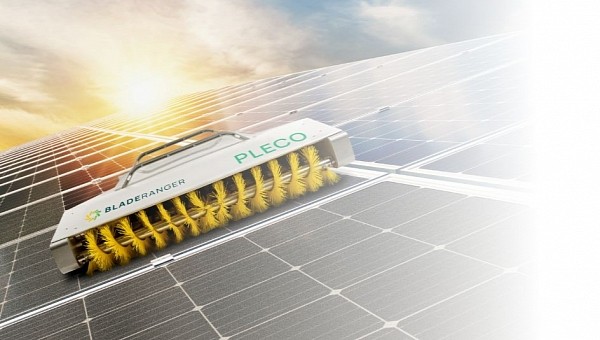Believe it or not, solar farms are some of the sites where we will see an interesting display of top-level technology in the future, with drones and robots creating a futuristic environment. At first glance, the Pleco-Solar might seem like a humble cleaning tool, but it’s actually a quite remarkable robot.
Statistics show that solar and wind power are becoming some of the most important sources of energy, with the possibility that over the next two decades, they could become the main sources for power grids. We’ve seen, for example, how the U.S. is starting to dabble in offshore energy production, with several wind farm projects currently in development.
This also means increased investments in clean energy technologies, including everything that’s related to solar power harvesting. The bad part is that, for the moment, solar power still comes with many challenges, especially when we’re talking large-scale production. Solar power farms involve a lot of work, which also raises costs, making access to clean energy less affordable.
One of the issues has to do with cleaning huge areas of solar panels that are also located in environments with harsh weather conditions (such as deserts). According to the International Energy Agency, dirty solar panels could be responsible for annual losses of at least €3 billion and up to €5 billion. That’s because unclean solar panels have a lowered harvesting capacity.
An Israeli startup named Bladeranger is addressing this problem with the launch of a small, but powerful robot. It’s called Pleco-Solar and its job is to keep solar panels clean. The best thing about it is that it works entirely on its own, with no human input.
Once placed on the panels, with the simple push of a button, the Pleco-Solar starts cleaning up to 400 square meters (4,305 square feet) per hour, without any joystick or operator. And it can efficiently cover up to 250 kW of solar panels in three hours.
It also claims to be the lightest robot of its kind in the world, weighing only 20 kg (44 lbs). This also makes it easy to transport – it only takes one person to carry and mount it at the job site. This tiny machine can also handle climbing at a 45-degree angle, so that it can reach areas where cleaning is usually more difficult. No need to worry about potential slipping either, thanks to Pleco’s vacuum suction chambers that help stabilize it.
Another one of its key features is that it doesn’t require the use of water, which contributes to the sustainability of the entire cleaning process. Plus, Bladeranger developed a dedicated platform for real-time monitoring and data analysis of solar panel cleaning. All in all, the company’s solution claims to help harvest 30% more energy.
The Pleco-Solar autonomous robot comes with a $12,750 price tag, but is currently on sale.
This also means increased investments in clean energy technologies, including everything that’s related to solar power harvesting. The bad part is that, for the moment, solar power still comes with many challenges, especially when we’re talking large-scale production. Solar power farms involve a lot of work, which also raises costs, making access to clean energy less affordable.
One of the issues has to do with cleaning huge areas of solar panels that are also located in environments with harsh weather conditions (such as deserts). According to the International Energy Agency, dirty solar panels could be responsible for annual losses of at least €3 billion and up to €5 billion. That’s because unclean solar panels have a lowered harvesting capacity.
An Israeli startup named Bladeranger is addressing this problem with the launch of a small, but powerful robot. It’s called Pleco-Solar and its job is to keep solar panels clean. The best thing about it is that it works entirely on its own, with no human input.
Once placed on the panels, with the simple push of a button, the Pleco-Solar starts cleaning up to 400 square meters (4,305 square feet) per hour, without any joystick or operator. And it can efficiently cover up to 250 kW of solar panels in three hours.
It also claims to be the lightest robot of its kind in the world, weighing only 20 kg (44 lbs). This also makes it easy to transport – it only takes one person to carry and mount it at the job site. This tiny machine can also handle climbing at a 45-degree angle, so that it can reach areas where cleaning is usually more difficult. No need to worry about potential slipping either, thanks to Pleco’s vacuum suction chambers that help stabilize it.
Another one of its key features is that it doesn’t require the use of water, which contributes to the sustainability of the entire cleaning process. Plus, Bladeranger developed a dedicated platform for real-time monitoring and data analysis of solar panel cleaning. All in all, the company’s solution claims to help harvest 30% more energy.
The Pleco-Solar autonomous robot comes with a $12,750 price tag, but is currently on sale.







